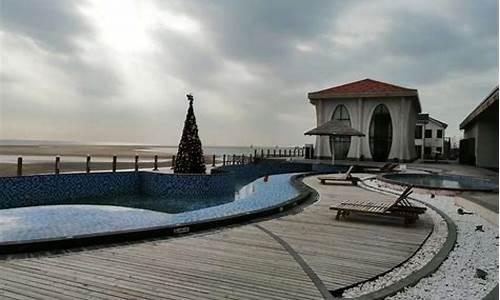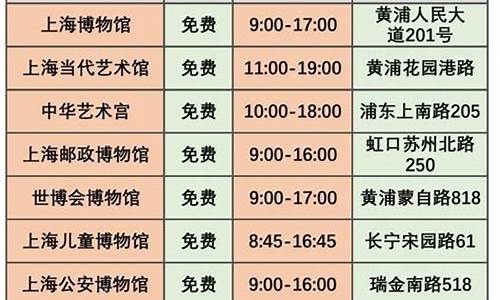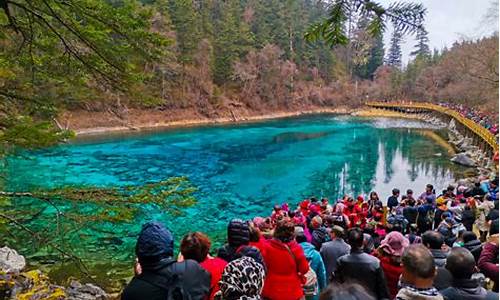南京旅游景点介绍稿件_介绍南京一处旅游景区!

如何用英文介绍南京的旅游景点?
梅园:Lo, north lean on the south by the lake in wuxi city center, is apart from the longshan 5 kilometers, the transportation is convenient. China's national industry head of household rong zongjing and rong desheng ZhongKun in for the world of the organizing HongYuan, cloth fang in 1912 purchase was built in the garden, relies on the mountain plant mei, mei adorn mountain, called lo. The new century lo hengshan scenic spot set to become the natural landscape, historical sites, so different ou, landscape architecture and leisure fitness in one of the famous tourist resort.
雨花台:YuHuaTai is China's new-democratic revolution memorial place, is key cultural relic preservation organ, the patriotism education demonstration base, national aaaa-grade tourism and the first hundred red tourism scenic area, is a collection of classical education, travel, leisure and entertainment for the integration of jiangsu provincial memorial scenic spot.
夫子庙:Confucius temple namely, it is enshrined temple sacrifices and Confucius place. Confucius temple was built in song dynasty, Confucius temple is located in the north shore beside qinhuai river GongYuan street. Confucius temple in before the temple for the PanChi, sits qinhuai river stone wall for zhaobi, span 110 meters, 20 metres high, is the national zhaobi most. North star has gathered before the temple LeTing kiosks, thinking, On the central built lingxingmeng, dacheng door, DaChengDian, mingde hall, honour JingGe construction; Another temple and east kuixing cabinet.
朝天宫:In nanjing, jiangsu province water Simon inside. According to legend had had built FuCha peloponnesos prince of smelting city, jin built ouzhi city temple, tang tai qing palace, the five dynasties prince changes in its YangPu built purple extremely palace. SongDaZhong temple-xiang (1008 ~ 1016) between, renamed temple-xiang palace, the renewal another kei view, yuan yuan zhen (1295 ~ 1296) years, change the forehead abstruse view, find liters dayuan xing YongShou palace.
瞻园:Giuliano garden is a national units of cultural relics protection. Is emperor qianlong OuYangXiuShi "look forward to YuTang, such as in heaven" named. Located in nanjing south ZhanYuanLu. Sits, 127 meters wide, deep things 15621 square meters, with a total area of 123 meters. So far there have been six hundred years history. Giuliano garden is a group of nanjing remaining well-preserved Ming dynasty classical garden architectures, and wuxi JiChangYuan, suzhou zhuozhengyuan and lingering and called "chiangnan four classical gardens".
中山陵:Sun yat-sen mausoleum is roc sun yat-sen, the forerunner of the Chinese democratic revolution of sun yat-sen mausoleum, located in the south east, nanjing city, jiangsu province, bordering on Friday MingXiaoLing, east perez-uzza soul valley temple. In 1926, January start building, in 1929 June 1st at FengAn p.85. 1961 become national key units of cultural relics protection.
李香君故居:LiXiangJun former residence is located in Confucius temple chao library street 38, is listed as municipal units of cultural relics protection, since after opening, visit the incense jun former residence, drive-travelers here hosted many cultural celebrities, leaving many calligraphy handwriting. There is a temple of Taiwan compatriots, back ShengQin visited MDM incense, said: "not direct mainland and this kind of exotic vision." estates, A former embassy in the navy attaches after this visit, putting pen to write: "historic legend, jiangnan JueJing." Nanjing forestry university an old man came to a lyric, impromptu compartmentallized.the: "LiuShao green, mei, romantic fragrance floor lamp, boat OARS qinhuai shadow, wife-or-sweetheart makeup stage, silk fan where... heart sweat bamboo difficult buried..." And if LiXiangJun jiuquan knew, is enough to comfort her that faint pathos the inexhaustible creative power as well
介绍南京风景名胜,气候的英语作文
Full travelling information of Nanjing
Nanjing, the capital of Jiangsu Province, is situated in the golden Yangtze River Delta. The city plays an important role in the economy, transportation and education of the east part of China, and is said to be the second largest commercial port in the East China following Shanghai. With its majestic landscapes and epic history and cultures, it has become a hotspot for tourists who always fall in love with the city.
General Information
Nanjing occupies an area of about 6.6 thousand sq km. (1.6 million acres), with a opulation of more than 6 million. Known as one of China's 'Three Stoves' (the others are Chongqing and Wuhan, Nanjing's temperatures in summer can reach a high of over 40 Celsius degree (104 F. degree) while the coldest days in winter can drop to less than minus 10 Celsius degree (14 F. degree). It still has a regular rainy season from June to July every year. So the spring and autumn are the more favorable times to visit weather-wisely and autumn is especially scenic when the maple leaves turn bright red.
History
Nanjing is one of the best-known ancient capital cities in China and vaunts a long history and deep cultures. The excavation of the skulls of ancient prehistoric men in the city dates Nanjing's civilization back to 350 thousand years ago. The city itself was built more than 2,400 years ago in the area southwest of the huge Zhonghua Gate. The gate was critical for many military functions. Since the third century AD, ten dynasties in China, including the epochal Republic of China founded by Sun Yat-sen, established Nanjing as their capital.
中文大意:
南京,江苏省的省会,坐落在金色的长江三角洲.城市起着重要的作用,在中国东部的经济,交通和教育,并且被认为是华东第二大商埠上海.其雄伟的景观和史诗般的历史和文化,它已成为一个热点总是爱上城市的游客.
一般资料
南京占地约6.6万平方公里的面积. (1.6万英亩),与超过600万opulation.被誉为中国的“三炉”(其他是重庆和武汉在夏天南京的温度可以达到摄氏度(104楼程度)的高超过40,而在冬季的最冷的天可下降到低于零下10摄氏度之一度(14楼程度),它仍然有一个定期雨季从6月至7月,每年因此,春季和秋季是更有利的时候,天气明智和访问,当枫叶转鲜红色,秋天尤其是景区.
历史
南京是在中国最有名的古都之一,和vaunts悠久的历史和深厚的文化.挖掘在城市古老的史前男性的头骨的日期返回到350万年前南京的文明.超过2400年以前建成,面积庞大的中华门西南城市本身.门被许多军事职能的关键.公元三世纪以来,十个朝代在中国,包括中国具有划时代意义的由孙中山创立的共和国成立南京为首都.
南京景点英文介绍
Nanjing Facts
Nanjing is situated in the hilly areas of Nanjing and Zhenjiang in the lower reaches of Yangtze River,at 32:03N and 118:46E. It borders with the Yangtze River Delta to the east and the hilly areas of South Anhui to the west,adjacent to the water network of Taihu Lake in the south and the Jianghuai Plain in the north. With the "golden waterway" Yangtze River flowing through the city,it is 380km from the Yangtze River estuary to the sea,and about 300km to Shanghai,the largest city of China.
Administration Zones
Nanjing is the capital of Jiangsu Province,now has under its jurisdiction eleven districts of Xuanwu,Baixia,Jianye,Gulou,Qinhuai,Xiaguan,Yuhuatai,Qixia,Jiangning,Luhe and Pukou and two counties of Lishui and Gaocun. The total area is 6598 square kilometers,including 4728 square kilometers as urban area,and its total population is 6.4 million.
History
Nanjing,an ancient capital of China,enjoys a worldwide reputation for its history and culture. Archaeological findings show that human ancestors lived in Nanjing area around 300,000 years ago,and primitive villages took shape 6000 years ago. These inhabitants were the original local people. From then on,people lived and multiplied in this area generation after generation.
In 472 B. C.,under Goujian (King of State Yue)'s order,a city historically called "Yue City" was built on the site of Rain Flower Terrace. That is the earliest record of city construction in Nanjing area,and by now it has a history of 2,470 years. During the Three Kingdoms Period,Dongwu (Eastern Wu) moved its capital to Nanjing - called "Jianye" then,in 229 A. D.. Thereafter,dynasties like Dongjin (Eastern Jin),Song,Qi,Liang,Chen,Nantang (Southern Tang - in Five Dynasties Period),Ming,Taiping Heavenly capital Kingdom and Republic of China in turn,established their capital here. In the past 1,700 years,Nanjing has achieved its fame as "an ancient capital of ten dynasties". Dynasties waxed and waned,thus left rich legacy of ancient times. Abundant historic relics date back to many stirring stories and epic legends of the past.
During Ming Dynasty,Nanjing got its present name for the first time. Over the long period of history,it had other names like Moling,Stone City,Jianye,Jiankang,Baixia,Shangyuan,Shenzhou,Jiangning,Jiqing,Yingtian and Tianjing. Its name might be different,yet the city itself kept being outstanding for its ancient history,brilliant culture,beautiful scenery and great achievements - therefore,it holds an important place in Chinese history.
Confucius[k_0_5n’fu∫j_0_5s 孔子] temple[templ寺庙 ] the Qinhuai river scenic[si:nik风光 ] area[ε_0_5 ri_0_5 地带]
孔庙和秦淮河风光带
1:The Confucius temple, located [lou’keitid位于]at the Qinhuai River scenic[si:nik风景的] area,
孔庙位于秦淮河风光带
2:is a well-known tourist[tu:rist旅游者 ] resort[ri’zэ:t常去度假的地方 ] of the ancient capital Nanjing .
她是古都南京闻名的旅游度假地。
3the river banks of Qinhuai are known for Confucius Temple
秦淮河因孔庙而闻名。
4and jointly[ d3эintli连带地] called the Confucius temple area.
因此也叫夫子庙地区。
5the Confucius temple is no doubt[ daut 怀疑] the most famous.
孔庙无疑是最著名的
6The temple is the place for people to pay worship[w_0_5:∫ip 崇拜] to Confucius.
庙是供人们崇拜孔子的地方
7:The Confucius temple here in Nanjing was first built in 1034
孔庙在南京第一次建于1034。
8and rebuilt[ri:blt重建] in 1986
重建于1986年
9The temple we often mentioned[men∫_0_5n提出] should include[inklu:d包括] three architectural [a:kitekt∫_0_5r_0_5建筑]complexes[kэmpleks群,综合体]:
我们常提的孔庙应该包括三个建筑群:
10the temple of Confucius with the hall of great achievements[_0_5’t∫i:vm_0_5nt大成] as the main [mein主要的]body,
孔庙及主体建筑大成殿
11the palace[p_0_3lis宫殿] of learning and the imperial[impi_0_5ri_0_5l帝国] examination [igz_0_3mi’nei∫_0_5n考试]center.
学宫和国家考试中心。
南京有什么景点 南京旅游景点简单介绍
1、钟山风景名胜区-中山陵园风景区。中山陵是我国伟大的革命先行者孙中山先生的陵墓,坐落在紫金山第二峰小茅山的南麓,北依青山,南临平川,依山就势,气势雄伟,使人有仰止崇高之感。
2、夫子庙秦淮风光带。夫子庙秦淮风光带位于南京城南,指的是以夫子庙建筑为中心,秦淮河为纽带,东起东水关淮青桥秦淮水亭,越过文德桥,直到中华门城堡延伸至西水关的内秦淮河地带,包括秦淮河两岸的街巷、民居、附近的古迹和风景点,是南京最繁华的地方。
3、南京阅江楼景区。“一江奔海万千里,两记呼楼六百年”。这副绝妙的对联,是南京阅江楼六百年风雨沧桑的真实写照。登上阅江楼,放眼远眺,但见浩瀚的大江滚滚东去,一览无余,仿佛郑和下西洋以来六百年烟雨尽收眼底。
4、珍珠泉风景区。珍珠泉风景区,位于南京市浦口定山西南麓。本景区属北亚热带湿润性季风气候。位于浦口以西6公里处,现已建成南京地区唯一的省级旅游度假区,面积1400多公顷。
5、高淳老街(高淳淳溪老街)。高淳老街,又名淳溪老街,虽属南京市,但距离南京市区挺远,大概有100多公里车程,在南京南边,江苏省与安徽省的交界处。老街自宋朝正式建立街市,至今已有900多年的历史,现存的建筑多为明清所建。高淳淳溪老街位于高淳的商业中心。
6、南京雨花台。雨花台风景名胜区位于南京中华门外1公里处,面积为153.7公顷,绿地覆盖率达90%以上。被确定为全国重点文物保护单位、全国爱国主义教育示范基地、国家首批AAAA级旅游区、全国风景名胜区先进集体、全国保护旅游消费者权益示范单位,并通过ISO9001/14001认证。
南京作为六朝古都,除了夫子庙和中山陵,还有什么历史景点?
南京是一座让人流连忘返的城市,这里不仅是有两千多年历史的六朝古都,又是坐拥紫金秦淮的山水名城。所以很多人选择来南京旅游,南京作为六朝古都,除了夫子庙和中山陵,还有很多的历史景点,在这里简单介绍一下。
1、玄武湖公园。玄武湖公园古名桑泊、后湖,位于南京市玄武区,是国家重点公园、国家4A级旅游景区,也是中国最大的皇家园林湖泊之一,被誉为“金陵明珠”,著名景点有玄武十景、玄武晨曦、玄圃等。并且作为南京的历史景点,玄武湖的历史可以追溯到先秦时期。
2、总统府。总统府是中国近代建筑遗存中规模最大、保存最完整的建筑群,也是南京民国建筑的主要代表之一,中国近代历史的重要遗址,现已辟为中国近代史遗址博物馆。感受民国时期的气息,体会过往烟云。
3、古鸡鸣寺。古鸡鸣寺位于南京市玄武区,是南京最古老的梵刹之一,自古就有“南朝第一寺”、“南朝四百八十寺”之首寺的美誉,是南朝时期中国的佛教中心。据说求姻缘很准哦!
4、遇难同胞纪念馆。南京大屠杀死难同胞纪念馆,通称江东门纪念馆,是国际公认的二战期间三大惨案纪念馆之一、国家一级博物馆、全国爱国主义教育示范基地、全国重点文物保护单位、首批中国20世纪建筑遗产名录。看完心情沉重。
南京有哪些旅游景点 南京十大旅游景点介绍
1、明孝陵(梅花山):明孝陵坐落在南京市紫金山南麓独龙阜玩珠峰下,东毗中山陵,南临梅花山,是南京最大的帝王陵墓,亦是中国古代最大的帝王陵寝之一。
2、夫子庙:夫子庙是一组规模宏大的古建筑群,是供奉和祭祀孔子的地方,中国四大文庙之一。位于秦淮河北岸的贡院街旁。 夫子庙,始建于东晋成帝司马衍咸康三年(337年),根据王导提议“治国以培育人才为重”,立太学于秦淮河南岸。
3、中山陵:中山陵位于南京市玄武区紫金山南麓钟山风景区内,是中国近代伟大的民主革命先行者孙中山先生的陵寝,及其附属纪念建筑群,面积8万余平方米。
4、玄武湖:玄武湖古名桑泊,中国最大的皇家园林湖泊,当代仅存的江南皇家园林. 位于南京城中,紫金山脚下的国家级风景区,至今已有一千五百多年的历史。
5、总统府:坐落于古城南京的原国民政府总统府,是一座有六百多年历史的历史建筑遗存。现在已成为中国最大的近代史博物馆。 园中亭台楼阁,古木叠障,是典型的徽派江南古典园林。
6、侵华日军南京大屠杀遇难同胞纪念馆:侵华日军南京大屠杀遇难同胞纪念馆位于原日军大屠杀遗址之一的万人坑,是一处以史料文物、建筑、雕塑、影视等综合手法,全面展示“南京大屠杀”惨案的专史陈列馆。
7、南京博物院:南京博物院坐落于紫金山南麓、中山门内北侧,是中国最早创建的博物馆之一。1933年筹建,1948年建成,主殿模仿天津独乐寺山门的模样。
8、牛首山:牛首山又名天阙山,是金陵四大名胜之一,因山顶东西双峰形似牛头双角而得名。一座牛首山,半部南京史。
9、红山森林动物园:红山森林动物园由南京玄武湖动物园迁移到此而建。现已建成小红山鸟类区、大红山猛兽区、放牛山食草动物和灵长动物三大展区,39个设计新颖的动物场馆依山营建,错落山间。
10、灵谷景区:灵谷景区位于中山陵以东约一公里处的灵谷景区,原为明朝“天下第一禅林”灵谷寺所在地,景区内汇集了六朝时期名僧宝志(即济公和尚原型)的墓塔。
南京景点介绍
导语:南京曾作为六朝古都,拥有六千多年的悠久历史,旅游资源也是非常丰富的。下面为大家整理了南京景点介绍,一起来看看吧!希望可以帮助到你。
南京景点介绍
秦淮河
南京景点介绍中怎能忘了秦淮河呢?“六朝烟月之区,金粉荟萃之所”“中国第一历史文化名河”,这些语句中所描述的都是南京秦淮河的美景。秦淮河是南京的母亲河,它以夫子庙为中心,集古迹、园林、画舫、市街、楼阁和民俗民风于一体,形成了独具特色的秦淮河风光带,要说秦淮河最美丽的,还是这里的夜景了,建议去南京旅游的朋友们,一定要去秦淮河欣赏一下美丽的南京城夜景。
门票:免费。
交通:乘坐4、7、40、44路公交车在夫子庙站下车,步行即可到达秦淮河。
夫子庙
南京免费景点有哪些,首选夫子庙。夫子庙是一座拥有上百年悠久历史的古老建筑群,它是中国四大文庙之一。夫子庙以大成殿为中心,南北成一轴线,左右建筑对称。除了各种古代建筑以外,夫子庙最吸引人的就是美食街了,据统计,夫子庙美食街的特色小吃种类达200多种,绝对能让爱好美食的朋友们大饱口福。
门票:免费。
交通:乘坐4、7、40、44路公交车在夫子庙站下车。
玄武湖
玄武湖古名桑泊,至今已有一千五百多年的`历史,位于南京城中,紫金山脚下的国家级风景区,中国最大的皇家园林湖泊,当代仅存的江南皇家园林,江南三大名湖之一,是江南最大的城内公园,被誉为“金陵明珠”。
明孝陵
明孝陵,明代开国皇帝朱元璋和皇后马氏的合葬陵墓。因皇后谥“孝慈”,故名孝陵。坐落在南京市东郊紫金山南麓独龙阜玩珠峰下,茅山西侧,东毗中山陵,南临梅花山,是南京最大的帝王陵墓,也是中国古代最大的帝王陵寝之一。2003年联合国教科文组织世界遗产委员会第27届会议 2003年7月3号决定,入选世界文化遗产。其周边的常遇春墓、仇成墓、吴良墓、吴桢墓及李文忠墓等5座功臣墓也同时被划入世界遗产保护范围。
中山陵
不收取任何门票费用的中山路也是非常值得一去的。众所周知,中山陵是著名的革命***孙中山先生安葬地,整座陵区的布局呈“警钟”形图案。中山陵的主要建筑牌坊、墓道、陵门、石阶、碑亭、祭堂和墓室等,各种建筑面积加起来多达8万平方米,远远望去,整座中山陵显得非常的雄伟壮观。
上文为大家介绍的南京景点介绍,你了解了吗?
声明:本站所有文章资源内容,如无特殊说明或标注,均为采集网络资源。如若本站内容侵犯了原著者的合法权益,可联系本站删除。












